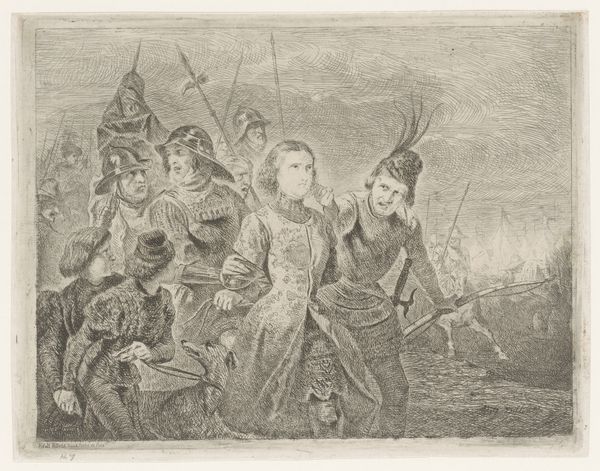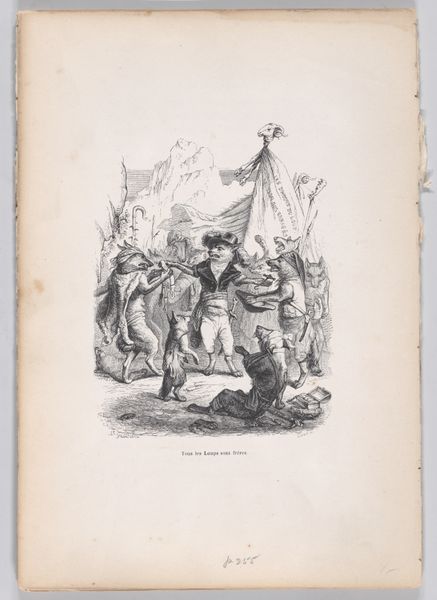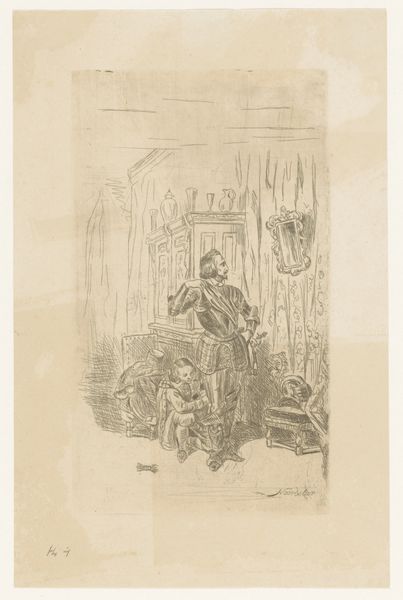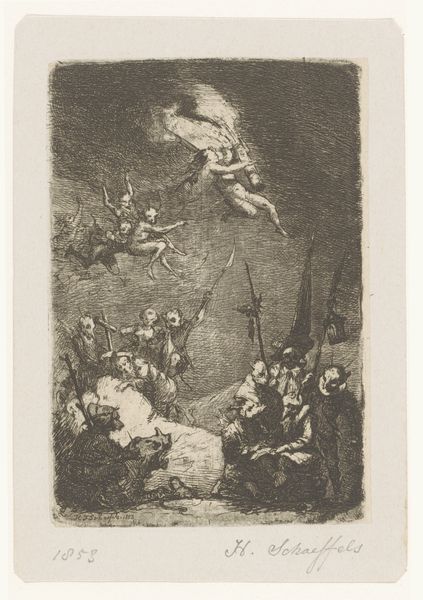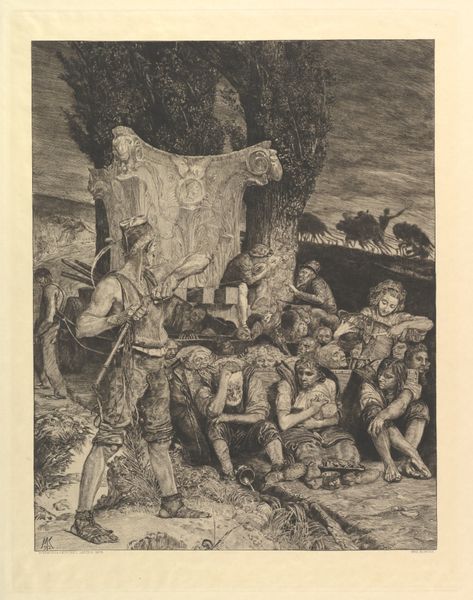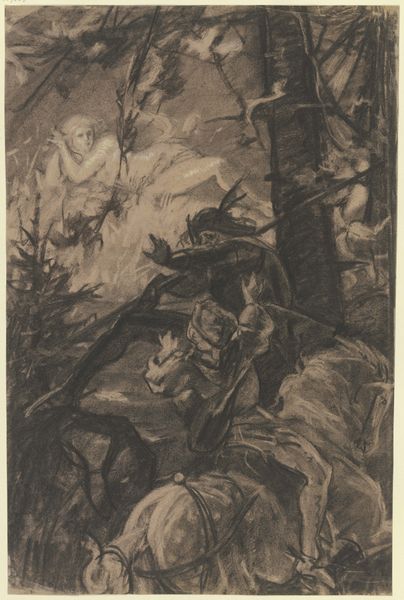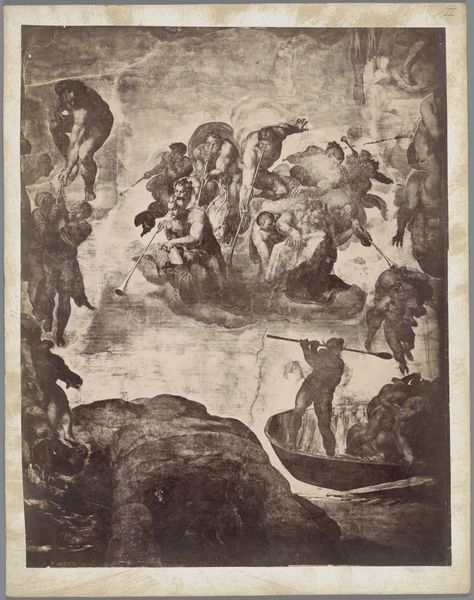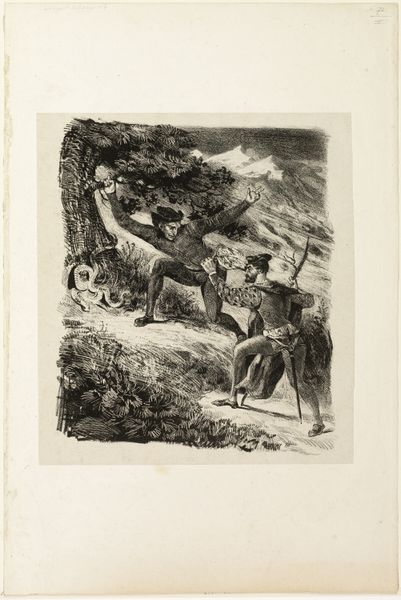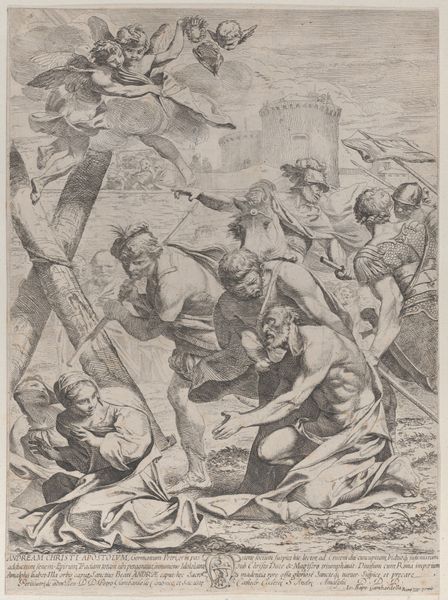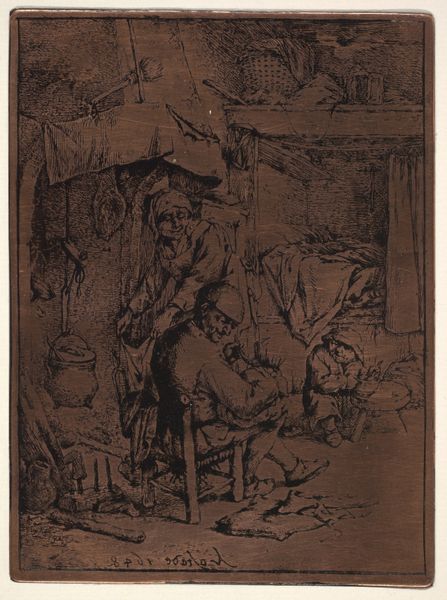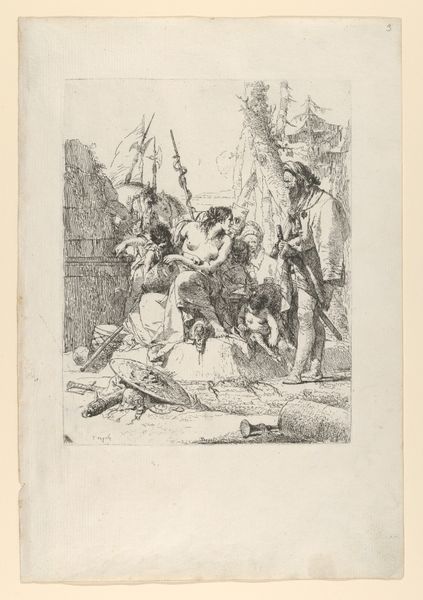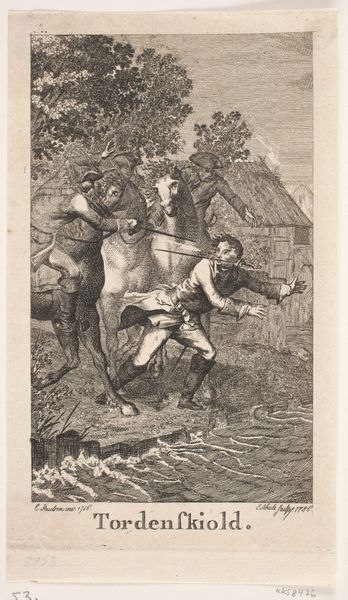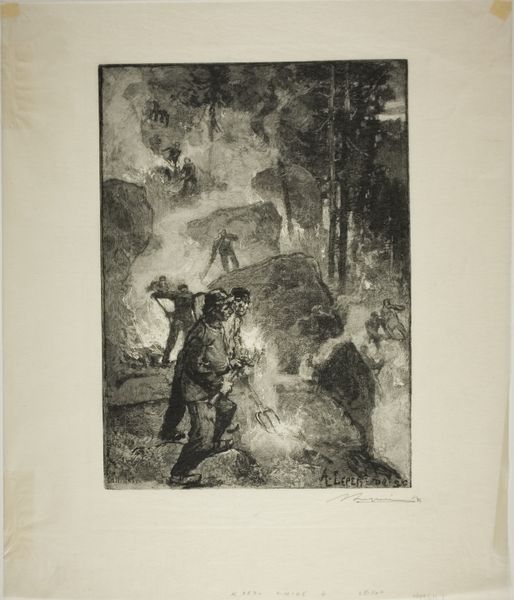
drawing, print, engraving
#
drawing
#
narrative-art
# print
#
figuration
#
romanticism
#
line
#
genre-painting
#
history-painting
#
engraving
Dimensions: Sheet: 16 11/16 × 12 3/16 in. (42.4 × 31 cm)
Copyright: Public Domain
Editor: We’re looking at "Two Conscripts" by Célestin Nanteuil, created sometime between 1825 and 1875. It’s a print, an engraving, currently residing at the Met. I find it striking how the artist frames the figures, almost like a window into a different world. What stands out to you about this piece? Curator: What I see is a glimpse into the social fabric of 19th-century France. Conscription was a highly significant and often resented aspect of life. Nanteuil's choice to depict these young men, likely headed off to war, positions the work as a commentary on the human cost of political ambition. Notice the contrasting emotional states – stoicism versus despair. Who benefits from the wars these young men are being sent to fight? Editor: So it’s more than just a sentimental farewell scene? The artist is actually saying something about the social impact of military service? Curator: Precisely. Romanticism often masked its political undertones within sentimental imagery. Nanteuil invites us to consider not just the individual stories but the broader societal implications of forced military service, the disruption to families and communities. The “window” framing enhances the idea of a brief, poignant moment snatched from the ordinary. Editor: The women and the child really highlight that sense of loss, like their lives are being permanently altered. Curator: Exactly. The setting too – that ambiguous, perhaps rural scene – emphasizes what's at stake: their connection to the land, their way of life. Does this resonate with contemporary discussions around military conflict? Editor: Definitely. Thinking about it in that way gives the image so much more power. I initially saw a historical scene; now, it feels much more relevant. Curator: And that's often the power of art – to speak across time and provoke new reflections on enduring human experiences. Seeing beyond the immediate aesthetics is critical to grasping the work’s public role.
Comments
No comments
Be the first to comment and join the conversation on the ultimate creative platform.

